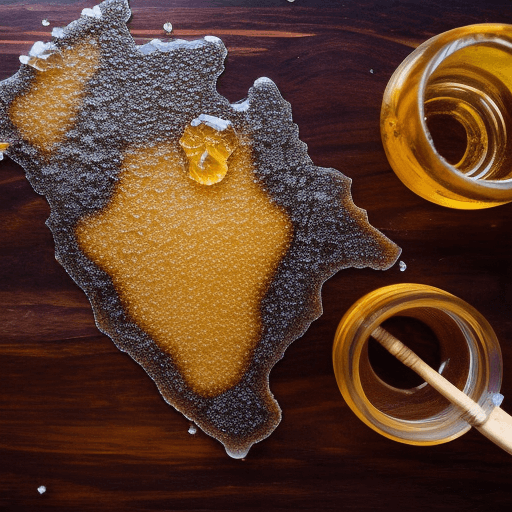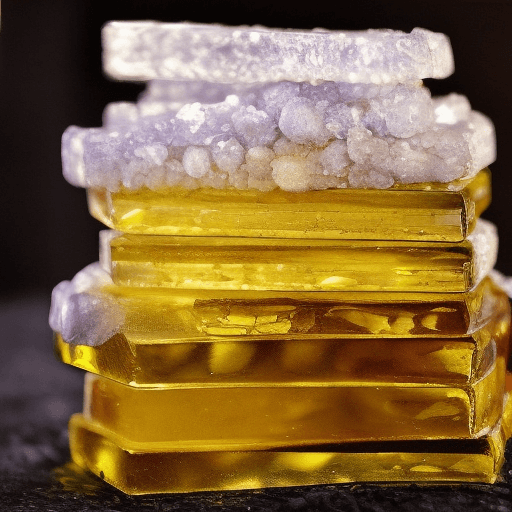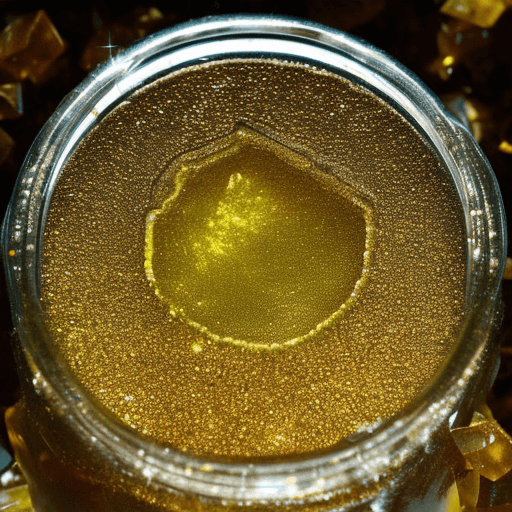Why does honey crystallize?
The answer is actually quite simple: the sugar in honey crystallizes when it comes into contact with air.
This process happens over time and can result in a sticky, granular mess.
Let’s explore the science behind honey crystallization.

Honey is made up of several sugars, including fructose and glucose.
When these sugars are exposed to air, a process called crystallization begins.
This process involves the formation of small, solid crystals due to a change in temperature.
Depending on the relative amounts of different sugars present in honey, it can take anywhere from a few months to years for crystallization to occur.
How to FIX crystallized honey (decrystallize) without damaging enzymes
Why does honey crystallize?
Honey crystallization is a natural process that occurs when the glucose and fructose molecules in honey form small crystals.
Honey is a supersaturated solution of two simple sugars glucose and fructose.

When it has absorbed more sugar than it can hold, the excess sugars tend to come out of the solution in the form of tiny solid crystals.
Which then accumulate as larger particles over time until eventually, they turn into something that resembles granular white or grayish powdery flakes.
Temperature is another factor that affects the rate at which honey crystallizes since warmer temperatures reduce solubility while cooler temperatures increase solubility by allowing sugar molecules to remain suspended in liquid form for longer periods but this should not be confused with freezing which would stop all molecular movement altogether.
How do you use crystallized honey?
The use of crystallized honey is a great way to add sweetness, flavor, and texture to any dish. While you can use regular honey as well, crystallized honey stands out due to its unique consistency. Its crystal-like properties make it a great addition to sauces, glazes, and dressings.

It can also be used in marinades for meat or poultry or mixed with herbs for seasoning.
Furthermore, crystallized honey can be used for baking; it forms a soft dough and adds a nice crunchy texture once baked.
Additionally, it can easily re-liquify when heated, making it an efficient sweetener for anything from muffins to pancakes!
What can I do to keep my honey from crystallizing?
One way to keep your honey from crystallizing is to store it properly.
Place the honey in an airtight container and keep it away from direct sunlight and sources of heat.

If you plan on keeping your honey for a longer period of time, try storing it in a cool area such as a larder or pantry so that it won’t be exposed to too much warmth.
Adding a bit of warm water (or lemon juice) when transferring the honey into storage can also help keep the crystals at bay and preserve the smooth texture for longer.
Additionally, periodically stirring your honey with a spoon or wooden stick can help to prevent any large clumps of crystals from forming, as well as create a uniformly mixed product.
If all else fails, do not be afraid to give your honey a gentle heating process by placing the container in warm water; this will recrystallize the honey temporarily while adding some delicious flavor enhancements due to the subtle caramelization that occurs during heating.
Is it safe to use Crystallized honey?
Is it safe to use Crystallised honey?
Many people find themselves wondering this very question, especially when such a large variety of honey is available.
Crystallized honey is simply the result of honey that has been left exposed in an opened jar for long periods of time.
It creates a thicker, sweeter product that many find tasty and even enjoyable.
Despite this, it can sometimes be perceived as unsafe due to tension surrounding the additional processing of food items.
However, crystallized honey is still just as safe to consume as regular honey and retains much of its nutritional value and health benefits.
If you choose to digest crystallized honey instead of the regular variety, rest assured knowing that there isn’t any difference in safety between the two.
How to melt crystallized honey?
Melting crystallized honey can be tricky, but with a few simple steps, you can enjoy your favorite, sticky snack once again.
If you want to melt the honey, start by placing the container of crystallized honey in a water bath.
You can place it on top of a pot of boiling water or in a larger bowl filled with hot water.
Alternatively, some people like to use the microwave method, gently melting the honey at an interval of 10-15 seconds, stirring between each session until the honey is melted.
Can you reverse crystallized honey?
Can you reverse crystallized honey? The answer is yes, albeit with some effort!
Crystallization of honey occurs because it contains glucose molecules that naturally tend to form crystals over time.
To reverse the process and achieve smooth, liquid honey again, simply put the jar in warm water, making sure to keep it covered in case the lid pops off.
Allow the jar to sit until it warms up but not until a boiling point – usually around 40 degrees Celsius.
Stir well before pouring out into a separate storage container.
Heating honey above 40 degrees C can destroy beneficial enzymes and bacteria in the liquid so try to keep your water temperature below this level when attempting to revive solidified honey.
Why does some honey not crystallize?
Why does some honey not crystallize despite its pretty standard ingredients?
This is because the natural process of crystallization requires certain kinds of sugars, water content, and acidity levels to combine correctly, and if these components are out of balance then the honey may not crystallize.
Honey also contains enzymes that can naturally slow down or prevent this process from occurring.
If you ever find a jar of honey that isn’t crystalized at all, it’s most likely because of one or all of the above-mentioned factors.
Centuries of observation from beekeepers have taught us that storing honey in optimal conditions helps preserve its original composition, which results in enhanced sweetness and less chance for crystallization to occur.
Honey Crystallization natural process. It happens because of changes in temperature or how long the honey has been stored.
Explain it to a child
Temperature affects how fast honey crystallizes. Warmer temperatures make it happen faster, while cooler temperatures make it happen more slowly. But this is different from freezing, which would stop all movement of molecules altogether.
You can prevent crystallization by storing honey at a warm temperature or stirring it before you use it.
If your honey does crystallize, you can still use it! Just place the jar in hot water to break up the crystals and make the honey liquid again.
Article Sources
Jacks of Science sources the most authoritative, trustworthy, and highly recognized institutions for our article research. Learn more about our Editorial Teams process and diligence in verifying the accuracy of every article we publish.
